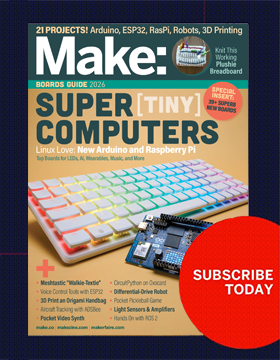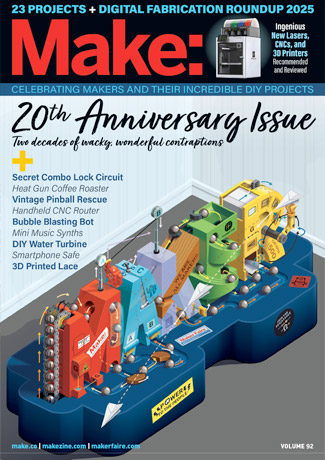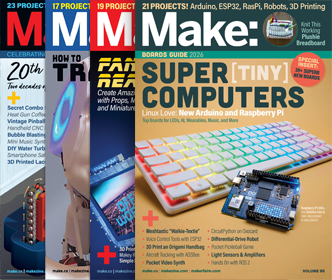

In 2020, I launched a small laser-cut product business with a run of 150 diorama kits that I designed, cut, soldered, and packaged myself. I was confident in my artistic chops at the time, but had never manufactured anything at scale before — and it showed. Three years and several hundred kits later, I’m still finding better tools and ways to optimize my workflow.
Among those tools is LightBurn, a layout and control software for laser cutters with some powerful features to help streamline designs for production work.
These are my top tips for getting the most out of your projects with LightBurn!
1. Design with a “production mindset”
Whether you plan to make one or one hundred of something, consider the manufacturing process as you approach your design — this will set you up for success before even firing up your machine. For example, it takes a laser much longer to engrave or “fill” a raster shape than it does to simply outline the same shape with a light score or cut mark. The difference may be only a few minutes — no big deal for a few sets — but multiply that by several dozen and you’ve added hours or even days to your production time!
With this in mind, I use filled shapes sparingly in my projects, and instead create details and texture with vector lines. This can be done within LightBurn using their native drafting tools, or imported from another design software. I like to draw freehand with a digital pen and drawing tablet using the brush tool in Adobe Illustrator. This technique lends an illustrative quality to the designs, while still preserving their editability as vector paths.
Inside the LightBurn workspace, a thoughtfully created design can be fine-tuned even further for maximum efficiency. Clock the total time estimated in the Preview window (shortcut Alt+P on Windows, or Option+P on Mac) and then dig into the Optimization Settings. Just a few adjustments can shave off minutes or even cut your production time in half!


2. Think outside the default settings box
When you first get started with LightBurn, you’ll likely use the presets for your machine in the Material Library. But once you have a sense for what’s legible and safe (as in, doesn’t catch fire, or crash the laser head) you can begin to experiment, changing one variable at a time to see how it affects the output.
Laser speed, power, and interval settings are adjustable in the Cuts/Layers window. Double-click any layer to open the more advanced Cut Settings Editor where you can test other variables like scan angle, cross-hatching, and z-offset to get different effects. Here’s how I use some of them in my projects:
- Cross-Hatch: engrave both horizontal and vertical patterns within a fill layer
- Z Offset: defocus the laser head by fractions of a millimeter to get broader, darker lines
- Scan Angle: change the direction in which the laser etches
- Interval: increase or decrease the line “resolution” of a fill layer

To easily run a side-by-side comparison, try the handy Material Test Generator and Interval Test Tool under the new Laser Tools menu in LightBurn.
3. Take some artistic license
When a design does call for engraving, I have found a settings “sweet spot” that both etches quickly and reads well aesthetically. The finished effect is a sort of hatch pattern with bold outlines around the edges — almost like classic comic book art, which nicely complements my design style. Check out the details on this miniature house to see what I mean!

As you adjust values in the Cut Settings Editor, you may notice that interval and lines per inch (LPI) are inversely related: as the LPI goes up, the interval goes down, and vice versa. Low intervals result in deep, densely engraved fills with crisp edges. High intervals yield fewer lines per inch, so they will engrave much faster, but also appear lighter, shallower, and less-defined. This can work for quick “draft quality” samples, but it can also be used to your advantage for finished pieces by cranking up the power!
To get this effect for your project will require some testing, but here is the basic process, which you can set up in your original design file, or within LightBurn:
- Select all areas you want to engrave.
- Set them all to one color and Fill mode.
- Duplicate those shapes in place (Ctrl+D on Windows, or ⌘+D on Mac).
- Assign a new color to the duplicated shapes and set them to Line mode (or Stroke, in some design software).
- In LightBurn, set the Fill color to a high interval, high speed, and high power setting.
- Set the Line color to a high speed and medium power. (You want a bold score mark that looks dark but doesn’t cut fully through the material.)
Caution
Note that the values here are “low” or “high” in relation to the baseline settings for that material and your specific machine. Make sure you know the safe range first before experimenting!
You can take this a step further by assigning different fill settings to specific features to create varying hatch patterns within your design.
4. Consider the end user experience
It’s always a good idea to keep parts organized and labeled, but it’s especially important if you won’t be the one assembling the finished product! Tabs and bridges, scored or perforated outlines, and part names/numbers go a long way to make final construction a breeze, and LightBurn has some useful features for creating them.
Tabs (also called bridges) in laser cutting are small sections of a cut path that are intentionally skipped or set to not cut fully through the material. This keeps parts attached to the sheet until they’re needed, when they can be easily snapped free. Creating tabs in my kit designs used to be a painstaking process of clipping and deleting individual nodes, but LightBurn can generate tabs in a specified quantity, cut power, and width automatically in the Cut Settings Editor! Here are some of my tips for tabbing:
- Set the tab cut power to 20%–30% to prevent splintering when parts are removed.
- Manually reposition any tabs interfering with curves, corners, or delicate parts of the design.
- Save on material cost by nesting small parts inside the negative spaces of others and adding tabs to connect the inner shape.
When a design calls for multiple layers, it’s helpful to indicate their placement with a faint scored or perforated outline. Any layer set to Line mode in LightBurn can be toggled to score or perforate instead of a through-cut:
- Duplicate the outline of the top layer part and assign it a new layer color.
- Position this outline where the part should be placed on the layer below.
- In the Cut Settings Editor, toggle on Perforation Mode to create a dotted line. Or, to make a faint score mark, set the power lower and the speed higher than the cut settings for that material.


Another feature your end users will thank you for is a clear part labeling system. This can be descriptive like “Right Door Panel,” or intuitive: window A clearly fits in the corresponding outline on panel A in this example.
Engraving labels is time consuming, so why not use single-line vector text, aka SHX typefaces, which can fire off a whole set of part labels in no time. For a deep dive on single-line fonts and tabs/bridges, check the LightBurn tutorials.
Images by Jen Schachter
This article appeared in Make: Vol. 89. Subscribe for more maker projects and articles!
ADVERTISEMENT










